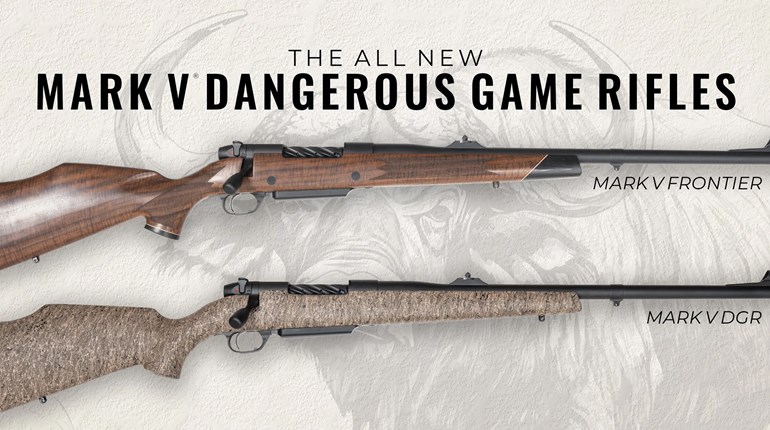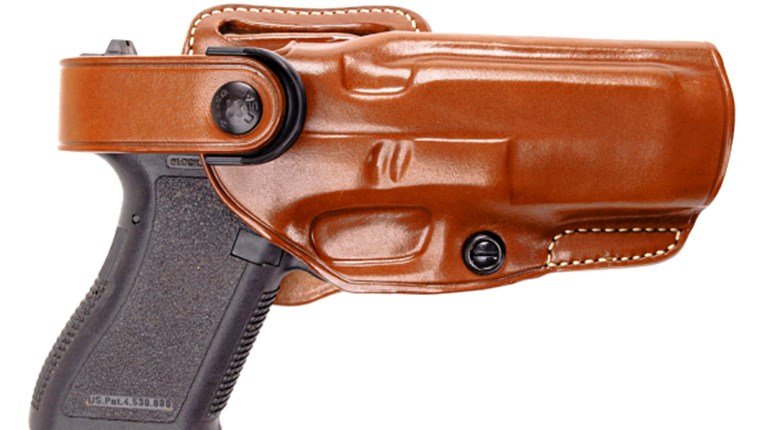** When you buy products through the links on our site, we may earn a commission that supports NRA's mission to protect, preserve and defend the Second Amendment. **

Recently, we've discussed what makes some barrels more accurate than others. However, there are ways that existing barrels can be enhanced. In this two-part series, we'll cover what they are.
Cryogenic Barrel Treatment
Recently, cryogenic rifle barrel treatments have received considerable attention as an accuracy-enhancing process. This treatment involves slowly cooling a barrel to approximately -300 degrees Fahrenheit, leaving the barrel to "soak" at that temperature for several hours, then gradually returning it to room temperature. Proponents of cryogenic treatment claim that it removes stresses, changes the grain structure, stabilizes the barrel so that it will not warp as it heats up, increases accuracy, improves barrel live and reduces metal fouling. Proponents also note that the process is relatively inexpensive.
Cryogenic treatment has been used for decades to remove stresses in various types of metals, however, the steel alloys commonly used in rifle barrels must be stress-relieved in the normal way (using elevated temperatures) to fully remove the stresses created during manufacture. According to metallurgists, cryogenic treatment alone will remove only about 6 percent of these stresses. In addition, some barrel steels, such as the 416R alloy used by many barrelmakers, seem unaffected by cryogenic treatment.
Tests performed by NRA Publications stafers indicate that cryogenic treatment produces a modest improvement in accuracy (10 percent or less) in some barrels, and virtually none in others. Research by Sierra Bullets showed no accuracy improvement in match-grade barrels, though a slight increase in barrel life was observed.
Molybdenum Disulfide Treatment
Another barrel treatment process that has become popular in recent years is molybdenum disulfide treatment, known colloquially as "moly" coating. Proponents for this system claim higher muzzle velocities, reduced metal fouling, easier cleaning and increased barrel life.
In one method, the treatment is accomplished by shooting molybdenum disulfide-coated bullets through the barrel. Once the bore is thoroughly coated with the moly, the claimed benefits can be enjoyed. However, tests performed by several barrel makers and Sierra Bullets indicate that molybdenum disulfide does not increase barrel life or accuracy, and can accumulate in the bore—creating its own type of fouling.
A second method of treatment, proposed by the Parsec Corp., soaks a clean bore in a supersaturated solution of passivated, virgin, weapons-grade molybdenum disulfide containing particles three-tenths of a micron in diameter. As molybdenum disulfide has a strong affinity for steel, these particles bond to the steel at the molecular level, where they cannot be removed. This system does not depend on moly-coated bullets and in fact discourages their use. This treatment method is simple and inexpensive, and duplicates the process used by the U.S. military on many ordnance items. Molybdenum disulfide barrel treatments have won the endorsements of many top competitive shooters and varmint hunters.
Next week: Fire lapping, barrel tuning and barrel fluting. Stay tuned!
Cryogenic Barrel Treatment
Recently, cryogenic rifle barrel treatments have received considerable attention as an accuracy-enhancing process. This treatment involves slowly cooling a barrel to approximately -300 degrees Fahrenheit, leaving the barrel to "soak" at that temperature for several hours, then gradually returning it to room temperature. Proponents of cryogenic treatment claim that it removes stresses, changes the grain structure, stabilizes the barrel so that it will not warp as it heats up, increases accuracy, improves barrel live and reduces metal fouling. Proponents also note that the process is relatively inexpensive.
Cryogenic treatment has been used for decades to remove stresses in various types of metals, however, the steel alloys commonly used in rifle barrels must be stress-relieved in the normal way (using elevated temperatures) to fully remove the stresses created during manufacture. According to metallurgists, cryogenic treatment alone will remove only about 6 percent of these stresses. In addition, some barrel steels, such as the 416R alloy used by many barrelmakers, seem unaffected by cryogenic treatment.
Tests performed by NRA Publications stafers indicate that cryogenic treatment produces a modest improvement in accuracy (10 percent or less) in some barrels, and virtually none in others. Research by Sierra Bullets showed no accuracy improvement in match-grade barrels, though a slight increase in barrel life was observed.
Molybdenum Disulfide Treatment
Another barrel treatment process that has become popular in recent years is molybdenum disulfide treatment, known colloquially as "moly" coating. Proponents for this system claim higher muzzle velocities, reduced metal fouling, easier cleaning and increased barrel life.
In one method, the treatment is accomplished by shooting molybdenum disulfide-coated bullets through the barrel. Once the bore is thoroughly coated with the moly, the claimed benefits can be enjoyed. However, tests performed by several barrel makers and Sierra Bullets indicate that molybdenum disulfide does not increase barrel life or accuracy, and can accumulate in the bore—creating its own type of fouling.
A second method of treatment, proposed by the Parsec Corp., soaks a clean bore in a supersaturated solution of passivated, virgin, weapons-grade molybdenum disulfide containing particles three-tenths of a micron in diameter. As molybdenum disulfide has a strong affinity for steel, these particles bond to the steel at the molecular level, where they cannot be removed. This system does not depend on moly-coated bullets and in fact discourages their use. This treatment method is simple and inexpensive, and duplicates the process used by the U.S. military on many ordnance items. Molybdenum disulfide barrel treatments have won the endorsements of many top competitive shooters and varmint hunters.
Next week: Fire lapping, barrel tuning and barrel fluting. Stay tuned!



































